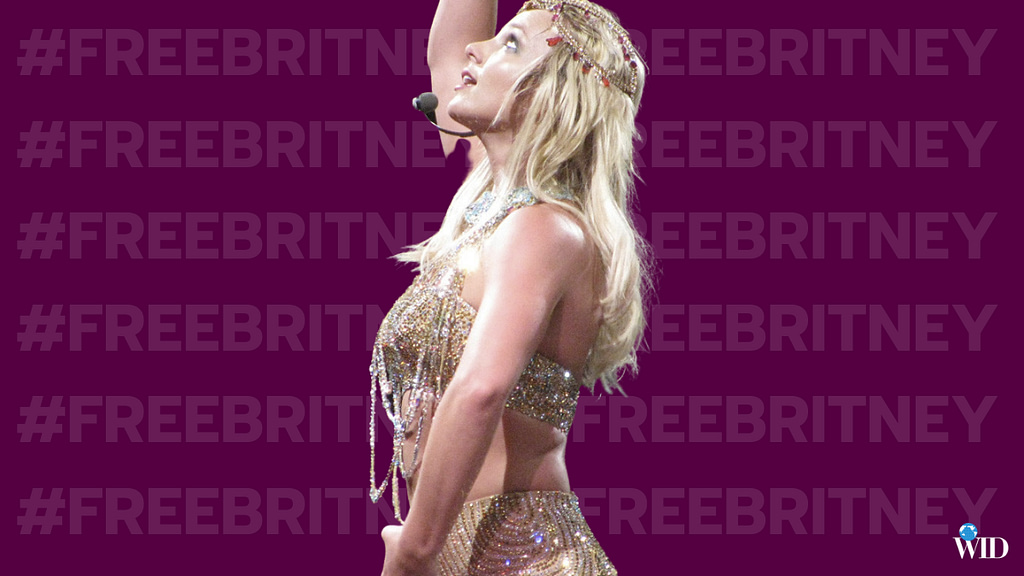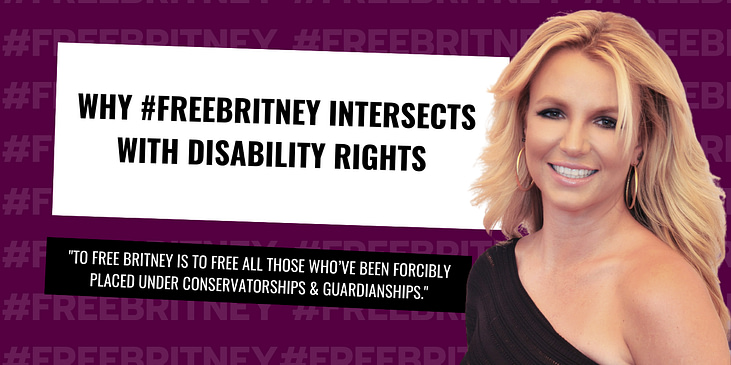By Sarah Kim
While conservatorships have been around for decades, it was not until pop star Britney Spears’s ongoing conservatorship dispute made the headlines in early 2021 that such a concept came to be mainstream.
The topic started to grab the media’s attention when The New York Times released the “Framing of Britney Spears” documentary in Feb. 2021. As Spears’s court hearings were made public, the conversation around conservatorships and guardianships only intensified.
In legal practices, a guardian is a court-appointed authority who takes care of people who cannot take care of themselves.
The documentary special chronicled the pop singer’s life, focusing on the past thirteen years that she was under her father and attorney’s conservatorship, forcing her to live under strict and restrictive living conditions. Under her conservatorship, Spears doesn’t have control over her finances, reproductive health or mental health care.
The court-supervised conservatorship gives Spears’s father control over her $47 million estate as well as her professional and personal affairs. Spears has been under this stringent arrangement since 2008 — after she experienced very public mental health episodes.
In recent months, the #FreeBritney campaign that her devoted fans have spearheaded since 2019 has skyrocketed. On June 23, Spears testified in front of Judge Brenda Penny uninterrupted for 24 minutes.
“I shouldn’t be in a conservatorship if I can work and provide money for myself and pay other people,” Spears said during the hearing. “The laws should change.”
To many, the fact that a successful celebrity is under such restrictive and intrusive care and order of her father is shocking. The New York Times film briefly brushed over the fact that a conservatorship is typically placed on the elderly or those with intellectual disabilities who can no longer take care of themselves.
However, what is grossly getting left out of Spears’s narrative is that under the gaze of the legal system, she is essentially deemed as a person with a disability. What sets Britney Spears’s conservatorship case apart from millions of people with disabilities is that it has the public batting an eye. Because of the sensitive nature, conservatorship hearings and proceedings are usually private and confidential, making them seem much less common than they actually are.
A commonplace for people with disabilities
Conservatorships are often a way for caregivers or family members to abuse their power and abuse people with disabilities, even those without intellectual disabilities or mental health illnesses. Often, conservatorship laws do the exact opposite of what they are meant to. Instead of having people with disabilities’ best interests, they impede the advancement of disability rights and deny disability justice to the beneficiaries.
The AARP estimates that about 1.5 million adults are under a conservatorship or guardianship in the U.S. However, this is merely a gross underestimate — there are no federal or state regulations to track who is put under a conservatorship. The ACLU reports that people only end up under conservatorships if they are assessed as having some type of disability. And, conservatorships controlling a person’s way of life — from forced sterilization to being banned from marriage to limited child visitation rights — is all too common for adults with disabilities under such legal care.
Many local governments continue to use conservatorships to force people with disabilities experiencing homelessness off the streets and into institutions. The disability community often refers to guardianships as “civil death.”
Sara Luterman, a journalist who is autistic and partially blind, told Slate, “You essentially legally stop being a person. All of the civil rights that you have are basically afforded to your guardian.”
Like conservatorships, institutionalization has a long history of disempowering disabled people. The primary difference is conservatorships remove the physical location of abuse and control while keeping in place systems and ideologies that assert that disabled people deserve to have their rights and independence taken away from them.
Conservatorships and reproductive rights
“I have an [IUD] inside of myself right now, so I don’t get pregnant,” Spears said at the June 2021 hearing. “I wanted to take the [IUD] out so I could start trying to have another baby, but this so-called team won’t let me go to the doctor to take it out because they don’t want me to have children. So basically, this conservatorship is doing me way more harm than good. I deserve to have a life.”
What Spears is enduring here is forced sterilization, a procedure with profound physical and psychological effects. Across the globe, people with disabilities are subjected to forced sterilization nearly every day. This is essentially a part of the eugenics-based practices of population control, attempting to prevent children from inheriting disabilities.
Forced sterilization for women with disabilities is technically legal in the United States. In the 1927 Buck v. Bell case, the Supreme Court ruled that a state statute allowing compulsory sterilization of people with disabilities did not violate the Fourteenth Amendment as long as it was “for the protection and health of the state.”
Supreme Court Justice Oliver W. Holmes ruled in favor of the decision and stated that “three generations of imbeciles are enough.” This statement harms people with intellectual disabilities or mental health illnesses the most — those who are too often wrongfully referred to as “feebleminded.”
Although the Americans with Disability Act (ADA) of 1990 significantly discouraged and reduced the number of coerced sterilizations performed, the Buck v. Bell decision still stands to this day. An estimate of 70,000 people with disabilities were forcibly sterilized as a result of the ruling.

Attempting to end conservatorships is a Catch-22
A recent New York Times investigation revealed that Britney Spears had attempted to get out of the conservatorship earlier and more often than not over the past 13 years. This directly contradicts her father’s sentiments that he “would love nothing more than to see Britney not need a conservatorship.”
Long before Britney Spears even came into the picture, disability rights advocates and disability justice organizations have been fighting to reform guardianships. Advocates say conservatorships often violate the civil rights of people with disabilities, but remain extremely difficult to terminate.
To get out of a conservatorship, the person needs to prove to the judge that they are now fully capable of managing their own affairs. However, once the person is deemed incapacitated, it is nearly impossible for them to prove that they’ve gained the skills and knowledge to live independently.
What’s more, the petitioner is not necessarily entitled to a lawyer to get out of a conservatorship. And depending on the restrictions the conservatorship imposes, the person does not even have access to the courts, especially if the guardian does not agree that the court order should be lifted. It presents itself as a Catch-22.
In Spears’s situation, her lawyer, Samuel D. Ingram III, earned $10,000 a week for doing essentially nothing. So, it was most definitely not in his best personal interest to grant Spears her request to terminate the conservatorship.
If a celebrity with insurmountable fame and fortune like Britney Spears could not terminate her conservatorship for over 10 years, what hope does an average person with a disability have?
“I truly believe this conservatorship is abusive … It is my wish and dream for all of this to end,” Spears said during her June 2021 hearing. “I want my life back.”
A better alternative to conservatorships
Before Britney Spears’s case, the general public probably did not have the slightest idea of what a conservatorship was. With the sensationalized, although much needed, attention about the misuse of such legal power, the general public must become aware of how common it is used to take advantage of or take control away from people with disabilities who are fully capable of managing their own affairs, especially those who are multiply marginalized and who are not celebrities.
Disability rights advocates have been demanding a better alternative to conservatorships: supported decision-making. In this case, the individual with a disability has a network of people they trust to help them make decisions — from managing assets and balancing checkbooks to choosing a place to live — instead of having court-appointed guardians to manage their affairs.
Everyone, with or without disabilities, relies on advisers, family members, friends and colleagues to make decisions in their daily lives. So, there is no need for an evasive system like conservatorships to protect or assist people with disabilities. Britney Spears does not need to be tied in a conservatorship, nor do thousands of people with disabilities. Disability justice means dismantling public perceptions that enable the abuse of people with disabilities.
To free Britney is to free all those who’ve been forcibly placed under conservatorships and guardianships.
Related Links: WID Economic Empowerment Program

Sarah Kim is a Freelance Writer for WID.


0 comments on “Why the #FreeBritney Movement Intersects with the Disability Rights Movement”